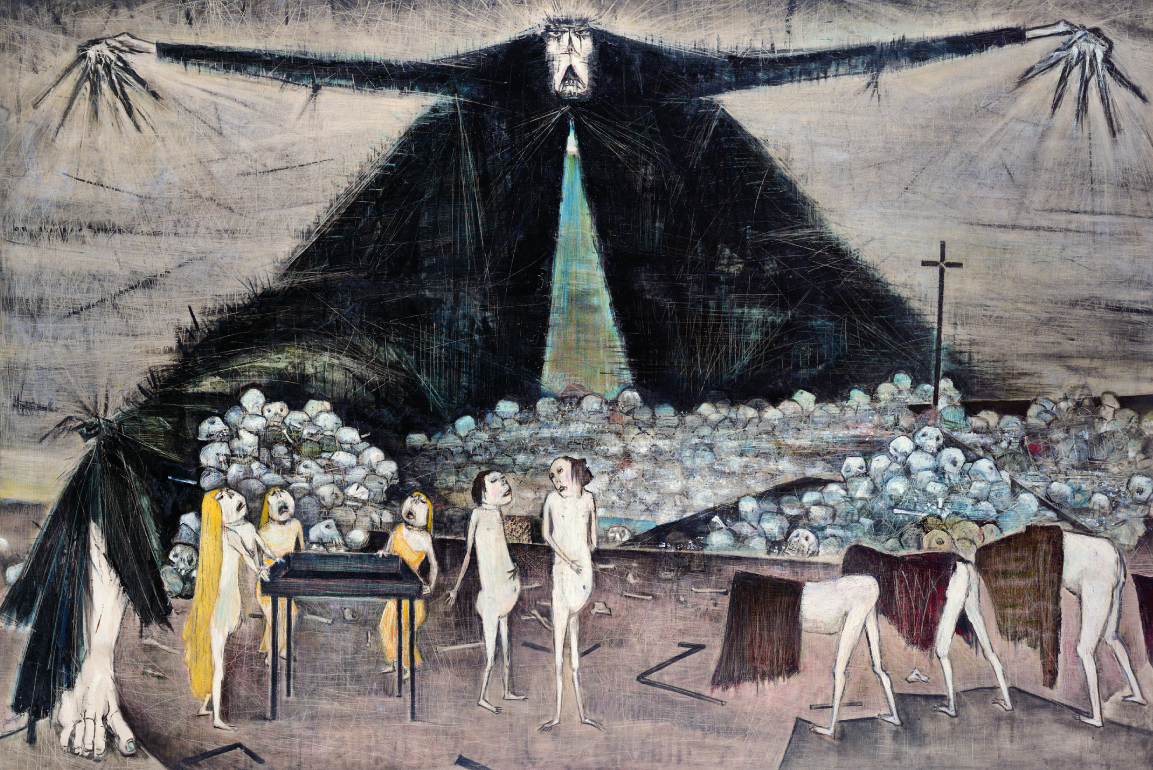When it comes to selecting "tortured artists" — those driven to create from the deep wells of their souls by immense suffering — the 20th-century Japanese painter Jiro Oyamada must seem like a shoo-in. The Fuchu Art Museum, in the western suburbs of Tokyo, is now celebrating the 100th anniversary of the artist's birth because he had a close connection to the area before his mysterious disappearance in 1971.
The images he created seem to come from a nightmarish world. Dark, ravenous, angular creatures appear through the brush strokes and scoured surfaces of his canvases like visitations from a disturbing netherworld, a sensibility that would have been at home in medieval Europe, creating gothic visions of hell. Adding to the grim aura is the artist's own appearance. The only image of him — a photograph — shows him with the disfiguring effects of the illness, under which he labored.
"He suffered from Weber's Syndrome from his birth," museum curator, Mayu Kobayashi, explains. "This caused the chronic lesions on his face and the swelling of the lower lip. He was raised by his grandparents because of the disease. His complex about his disfigurement appears in the figure of the deformed creatures in his art, especially the bird women. From one perspective, these are also his self-portraits."

















With your current subscription plan you can comment on stories. However, before writing your first comment, please create a display name in the Profile section of your subscriber account page.